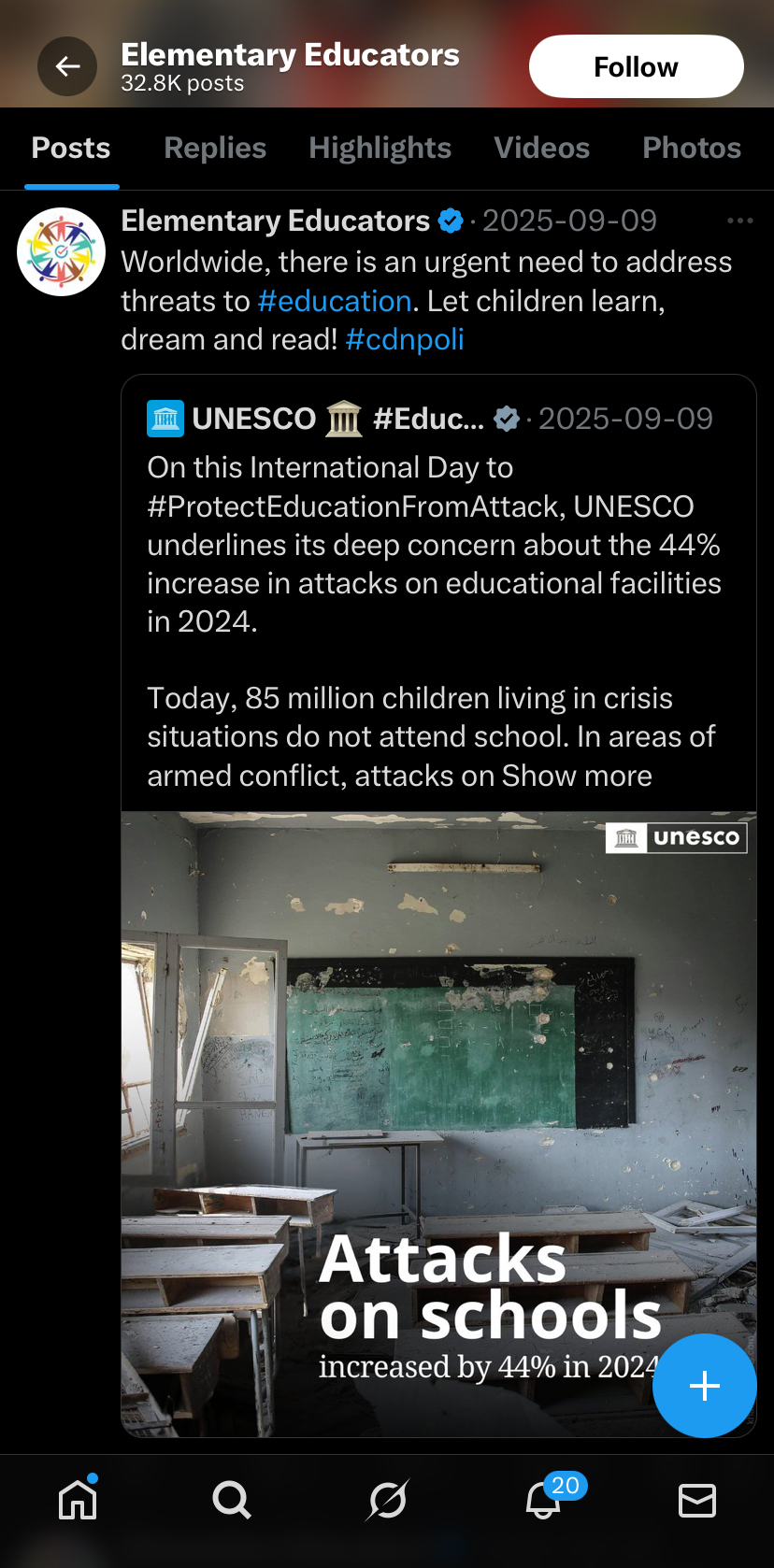The advent and proliferation of the Internet have changed various dynamics of modern life, with education being one of the impacted fields. The Internet has contributed to the creation and impressive uptake of social media applications, such as Facebook, X, Instagram, and Snapchat. People use these applications to network with others at different levels. In some cases, networking through social media in an educational or professional context entails intentional use of digital platforms to connect with individuals, communities, and organizations for the purpose of learning, collaboration, and professional growth. Unlike casual social media interactions, this type of networking is purposeful because it seeks to create and nurture relationships that provide access to new ideas, diverse perspectives, and practical resources.

The image on the right shows a platform for teachers where they share insights and challenges they faced in their profession.
From the perspective of learners and educators, networking via platforms like Facebook and LinkedIn transforms social media from a space of entertainment into a tool for building knowledge and professional identity (Hass et al., 2020). Such an interaction allows participants to share insights, engage in meaningful discussions, and stay informed about current trends in their respective fields. Furthermore, it creates opportunities for dialogue with professionals and peers outside one’s immediate physical environment, thereby expanding the boundaries of traditional learning and collaboration.
One outcome of networking via social media is the development of a Personal Learning Network (PLN), which is essentially a self-directed, dynamic system of connections that supports continuous growth. By building a PLN, individuals can access real-time advice, curated resources, and ongoing conversations that may not be available within their immediate workplace or school. For instance, a professor might follow thought leaders in pedagogy, join subject-specific communities, and participate in X chats, hence creating a tailored stream of professional learning. Similarly, a student might connect with classmates, industry professionals, and academic organizations to gain support and exposure to opportunities.
People who use PLN enjoy numerous benefits. Firstly, PLN encourages lifelong learning by providing constant access to evolving knowledge. Secondly, it promotes collaboration and idea exchange, allowing people to contribute to collective problem-solving while learning from others’ experiences. According to Moreillon (2016), being part of a connected community allows professionals to collaborate, share ideas, and solve meaningful problems together. Additionally, PLN enhances professional visibility and identity, since active participation in online communities can highlight one’s expertise and commitment to the field. For students, PLN provides a sense of belonging and motivation as they see themselves to be part of a larger community striving toward similar goals.
Nevertheless, the effectiveness of PLNs requires discernment in that one must be able to filter reliable sources from misinformation as well as balance online engagement with offline responsibilities. When managed thoughtfully, networking through social media and cultivating a PLN becomes a powerful strategy for academic success and professional advancement. It transforms learning from a solitary activity into a connected, community-driven process that continues well beyond formal education.
References
Haas, M. R., Haley, K., Nagappan, B. S., Ankel, F., Swaminathan, A., & Santen, S. A. (2020). The connected educator: personal learning networks. The Clinical Teacher, 17(4), 373-377.
Moreillon, J. (2016). Building your personal learning network (PLN): 21st-century school librarians seek self-regulated professional development online. Knowledge Quest, 44(3), 64-69.
